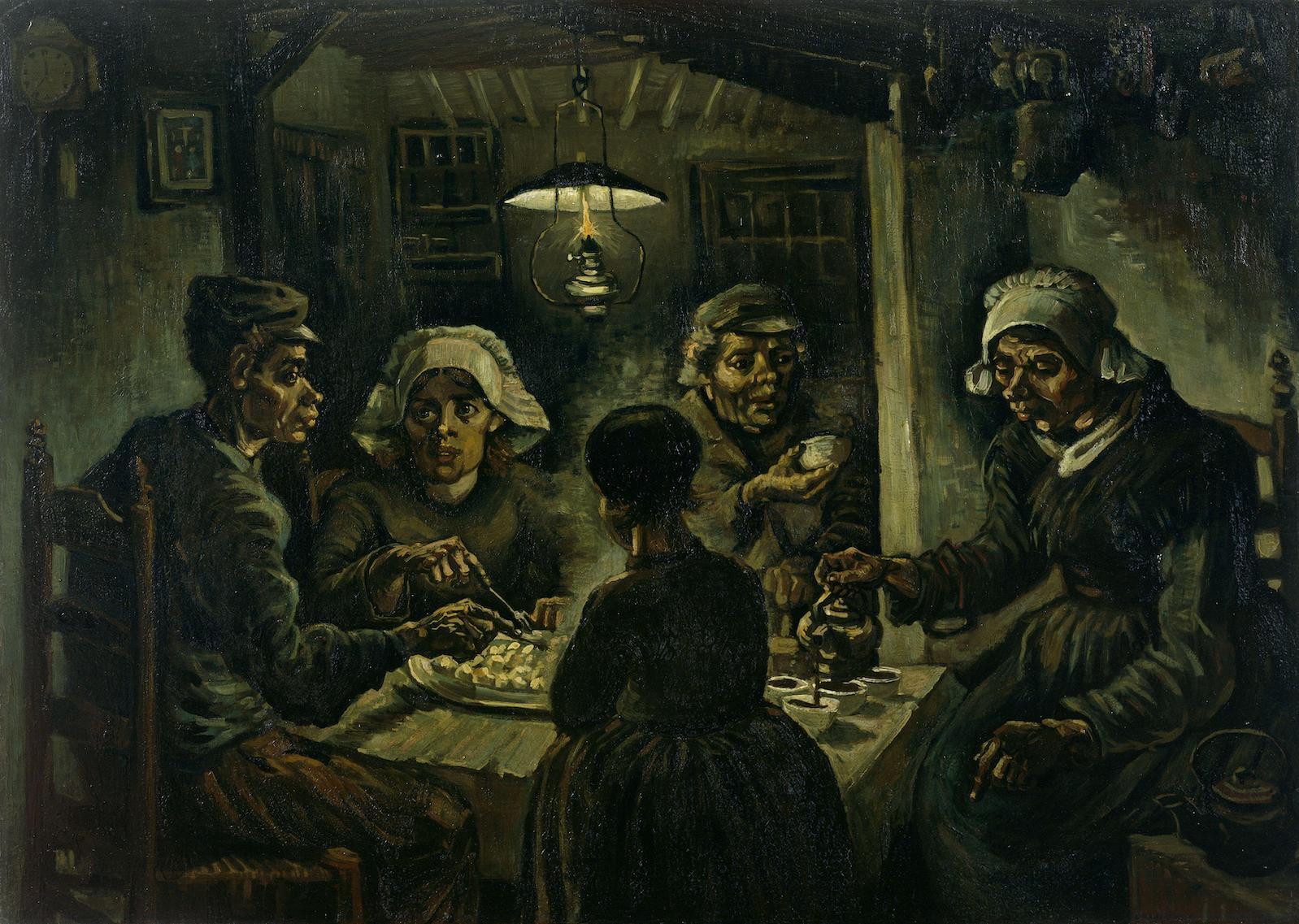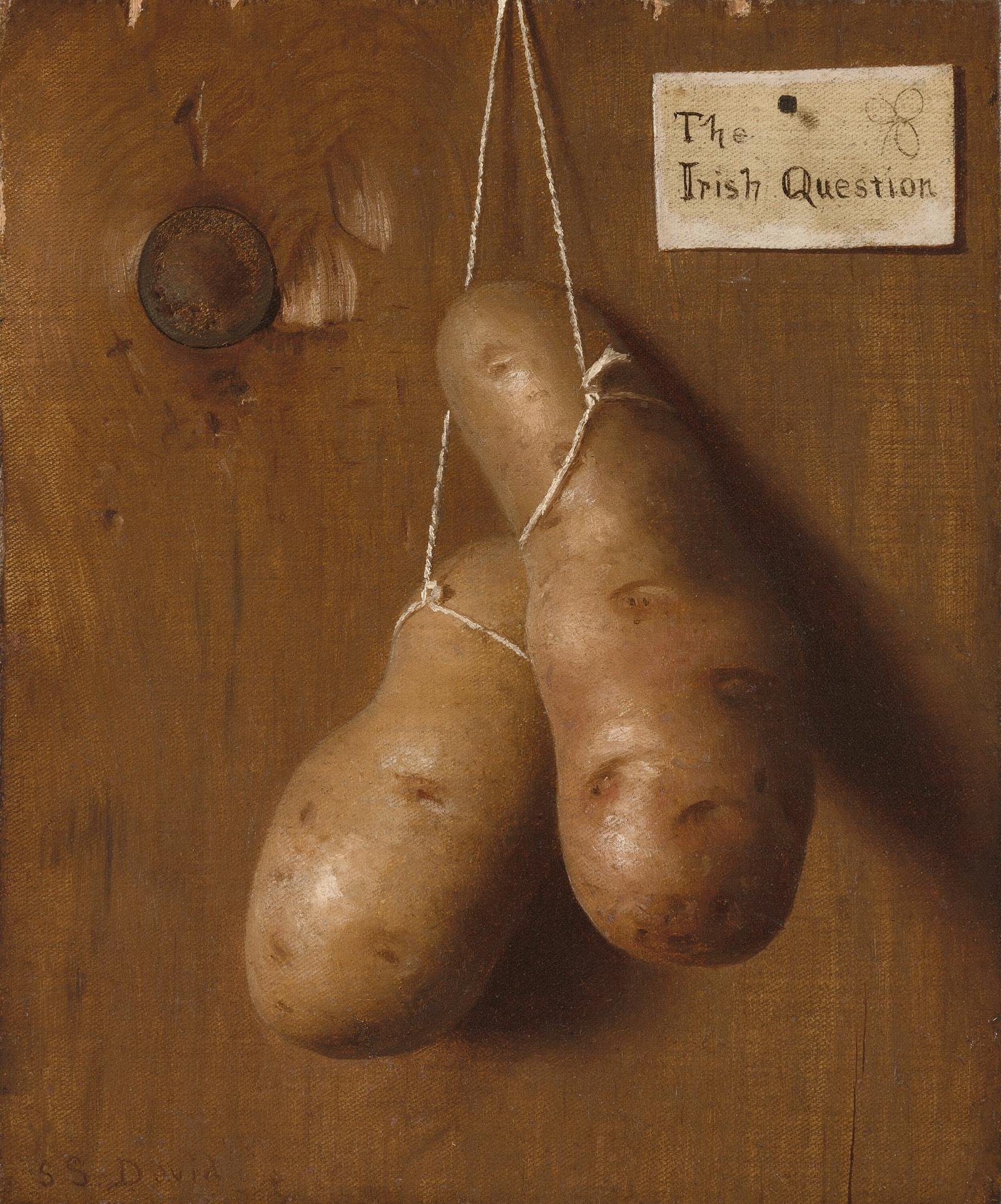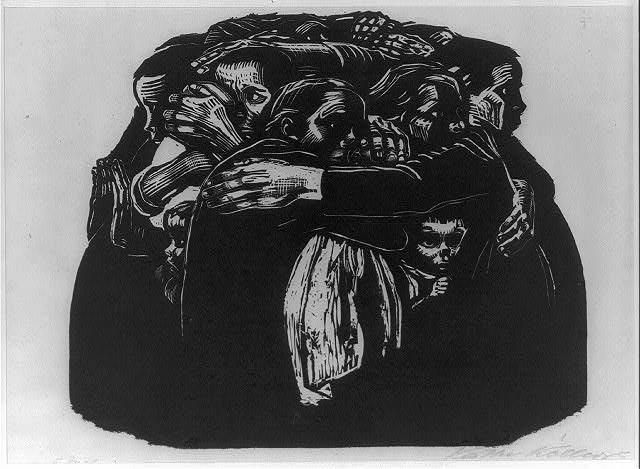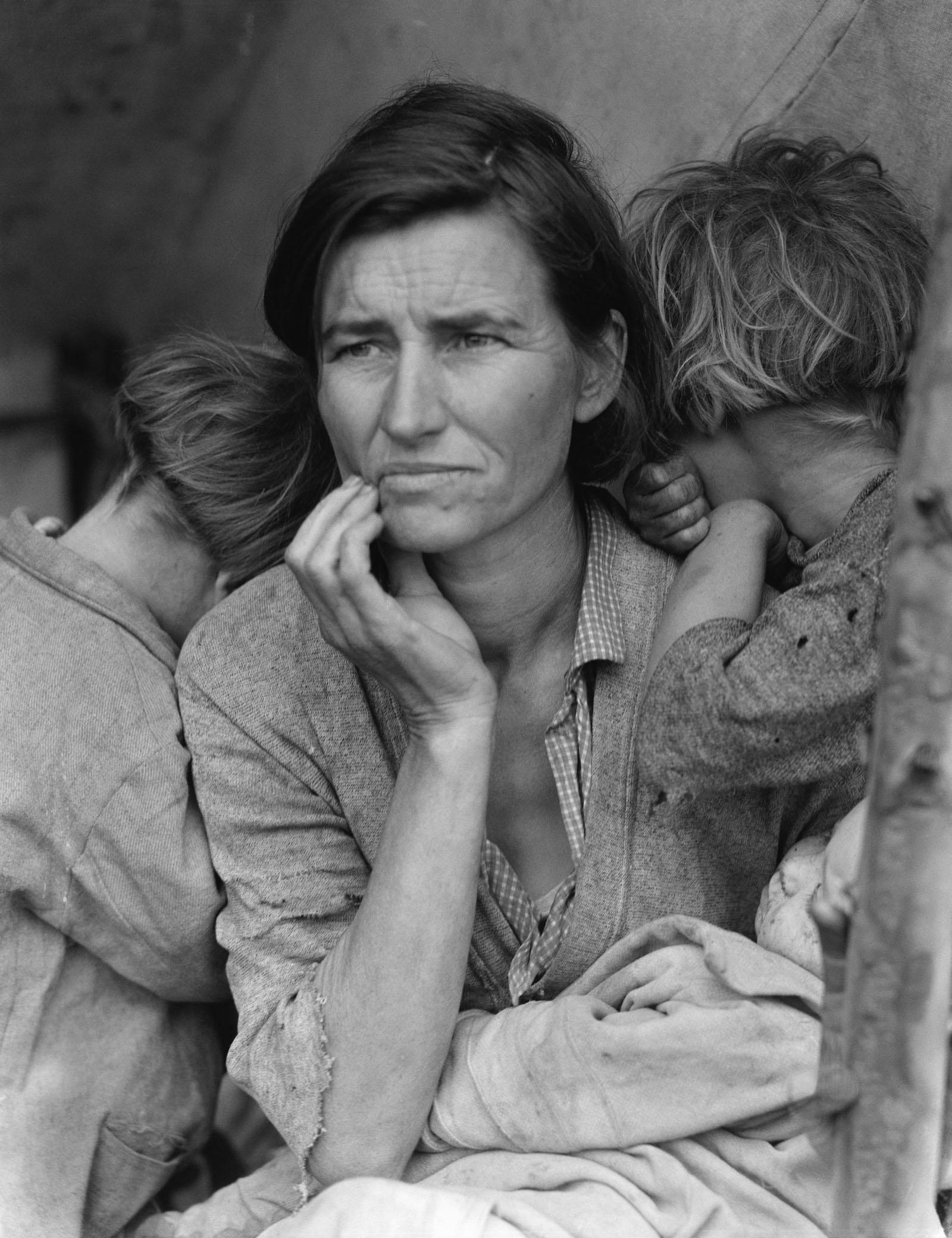Ireland’s Great Famine, or Gorta Mór, was arguably the worst humanitarian crisis in recent Western history. Roughly a quarter of Ireland’s population immigrated or died due to disease in the 1840s and 50s. Anyone today visiting Boston notes the pride of the city’s Irish descendants but, at the time of their nineteenth-century arrival, the diaspora was unwelcome.
When Evans created his painting, potatoes had transformed in America from a neutral food to a politicized one. The Irish famine had led many Americans to see potatoes as toxic due to Irish immigration.
The Irish Potato Famine did not result in war, though it did cause political unrest. This was not the case for the Great Depression in Germany, which resulted in polarization on both the far-left and far-right and a national famine. Käthe Kollwitz, a prominent female artist, warned of this crisis in several woodcuts. She employed the medium, due to its coarse, harsh lines, to convey tension held in the bodies of starving parents in 1922’s The Mothers, and in 1897’s Misery (In Need).
































